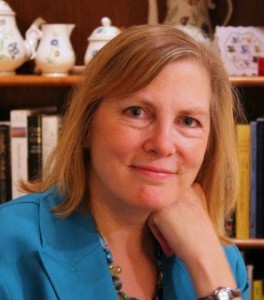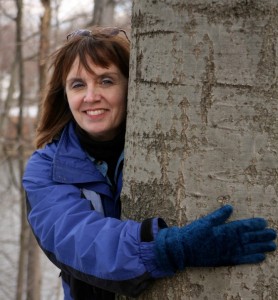The Gift of Comforting by Val Walker – For many of us, giving comfort to others is easier than receiving comfort for ourselves. The following is my own story of receiving comfort from an old friend, a life-changing experience for me, which inspired my book, The Art of Comforting. Here is an excerpt from the introduction, about a visit from my friend, Morna.
IN THE FIRST BLEAK MONTHS after my divorce, I returned to my home state of Virginia after five years of following my husband’s career moves to Minnesota and New Jersey. Heartbroken and homesick, traveling with my faithful, adaptable cat, Ivan, I imagined my homecoming would be wonderful and warm, surrounded by welcoming old friends, family, and colleagues.
To my surprise and dismay, people were disappointingly unforthcoming. I was not automatically invited to parties, dinners, reunions, and gatherings. I could hardly get folks to commit to a cup of coffee or to stop over to my modest apartment for a pasta salad. So busy with their own families, jobs, problems, and responsibilities, it seemed no one could squeeze me in for some “quality” time.
But I was offered plenty of advice, platitudes, opinions, and cheer about how to move forward with my new life. “You’re better off without him.” “You need to find a singles support group.” “Living well is the best revenge.” My Christian friends told me to pray more, and my New Age friends chided me to meditate more. I should practice yoga, read self-help books, open up a savings account, travel, take flute lessons, stop seeking approval from others, tap into my playful inner child.
When offered these tips to get over my grief, as if just being handed a brochure about my condition by a hurried doctor, I felt pushed away. Did anyone, besides a therapist or pastor, have the time, let alone the patience and interest, to sit down with me, to talk heart-to-heart? But God forbid anyone spot my neediness, or worse, my loneliness! So, for the purpose of maintaining my reputation as a likable, invitation-worthy person, I hid my hunger for comfort from people. I resorted to holding Ivan in my lap at night, with a box of tissues, popcorn, and Animal Planet on TV.
One day, an old friend from Scotland, Morna, phoned and asked if she could come visit me soon. She could take a week off from her psychotherapy practice and “really wanted” to see me. We hadn’t met for years, and I had missed her terribly. I was ecstatic, but had to keep my neediness in check. I invited her to come in October, offering my fold-out sofa bed and free home-cooked food.
When she arrived at my spruced-up apartment, we immediately opened a bottle of sherry and lit candles to celebrate. She gave me gifts, a beautiful green agate stone and a book of poems, and I entertained her with the latest movies, a fun itinerary of sights to see, and a show-and-tell of the pillows I had made for three chairs. We were off to a good start.
My neediness was kept buttoned-down fairly successfully for the next three days. Morna, with her impeccable Scottish manners and brisk humor, seemed quite happy with my fake-it-to-make-it strategy of performing as a gracious hostess. Certainly, after her effort to travel across the ocean to spend her precious time with me, she deserved the best of me and the best views of Virginia, with a drive through the Blue Ridge Mountains and a stroll in the gardens of Monticello. She gently asked how I was coping with being alone, but I assured her I was learning how to keep positive and busy. She offered me opportunities to open up and talk, but I didn’t dare expose my neediness.
Finally, a year’s worth of pent-up grief and despair erupted in my kitchen on Morna’s fourth day with me. Fixing her an omelet and sausages for breakfast, I burned myself and dropped the frying pan full of grease all over the floor. I snapped, threw the spatula against the wall, slammed my fist on the cupboard, kicked sausages across the floor, and yelled a slew of profanities. I crawled down to the floor to wipe up the battered eggs and mess, and collapsed into tears.
“I’m such a loser!” I wailed. “I can’t even fry eggs for you!”
Huddled on my knees, sobbing, I hadn’t noticed Morna had quietly approached me. She sat down on the kitchen floor next to me and softly put her hand on my shoulder.
I glanced at her quickly without making eye contact and said, “Now you see what a basket case I really am.”
“I see someone who is in pain . . . a lot of pain.”
I wept longer, letting her words sink in. She was right. I felt relief just hearing her say the truth out loud.
“Yes, that’s right. I’ve been really, really hurt. I feel so alone. I am so afraid no one wants to be with me anymore.”
Morna made herself more comfortable on the floor, sitting cross-legged. “I don’t mind listening, if you want to talk about this now.”
I remembered she was a professional counselor and blushed. “You sure you aren’t just playing counselor with me? You’re supposed to be getting a break from listening to people in pain all the time.”
She smiled softly, and paused. “I’m your friend. Why do you think I’m sitting here on the floor with you?”
Feeling welcomed to speak from my heart, uncensored, I took the plunge to trust her. The floodgates opened. We sat on the kitchen floor for another hour, until our legs ached, then moved to the sofa and talked nonstop until 3 a.m. In the next day’s story-telling marathon we cried, ranted, laughed, ate chocolates, threw toys for Ivan, and cursed at the lawyers, doctors, creditors, lovers, and in-laws who had screwed us over. By evening, my rip-roaring emotions felt purged well enough to suggest to Morna we go out for sushi.
Still, I soaked up some tears with my napkin over our dinner on our last night together, yet felt completely accepted and at ease.
In my last few minutes with her at the airport, as she was about to step past the gate for her plane, I repeatedly blurted out, “Morna, I can’t thank you enough.”
She paused and put down her suitcase.
I shrugged anxiously, “How can I ever repay you?”
She gave me a long, mighty hug, then looked boldly into my eyes. “You’ve already paid me back. You’ve given me your trust, after all the hurt you’ve been through. You’ve given me more than I ever dreamed of. Thank you.”
Too moved to speak, I barely nodded and hugged her quickly one last time.
I watched her disappear into the crowds to board her plane, still filled with the warmth and tenderness she had bestowed upon me. As an ocean of people passed by me, I made my way through the maze of lobbies and escalators to my car.
Then, in the parking lot of Dulles Airport at rush hour, with roaring planes coming and going overhead, I paused to marvel at a blazing October sunset. Standing under a wild sky bursting with gold and crimson light, I realized I could bear my raw, unruly grief with acceptance and even love.
Though I might never heal completely, as long as I could find comfort with at least one true friend, the beauty of the sky, and one old sweet cat, I was going to be okay.
A Rare Skill
Morna’s visit provided me with the comfort I had been craving, but it also left me wondering why comforting people were so hard to find. And even if we do find those who are willing and ready, why is it so hard for people to just sit with someone who is suffering without trying to make their pain go away so they can just “get over it”?
Further, I knew that providers around me, including psychotherapists, pastoral counselors, nurses, physicians, yoga instructors, and other healers were not paid to simply comfort people like me in the rawest, most acute stages of grieving. Though knowledgeable and well-trained, and often warm and caring, these professionals were paid to heal people, change people, treat people, and do this as efficiently as possible—to give us their “bang” for our buck. Of course, especially in America, where health care costs consumers so much of their hard-earned money, professionals were trained to fix us as quickly as possible. Not much time for sitting with us while we have a good cry or stare hopelessly at the walls trying to wrap our overwhelmed minds around scary things like our “future,” or our “recovery,” let alone our sky-high pile of bills. Like many people going through difficult times, I wasn’t quite ready for healing yet—I needed comforting first and foremost. And the lack of available comforters made my grief twice as painful.
Morna offered me something that few professionals or laypeople are willing or even able to offer: She allowed me to fall apart in her presence. She didn’t judge me, diagnose me, hire me or fire me, fix me, bill me, instruct me, save me, or heal me. She wasn’t trying to be absolutely unconditionally loving or saintly. She wasn’t even trying to make me smile. She just sat with me amid the mess in my kitchen, the mess in my life, and the mess in my heart and allowed me to be in my pain. Unfazed by all this mess, she sat there and held it all together with her mere presence.
Presence. Unshakable, steady, tender, and empathic presence. Soft strength. That was comfort. That was Morna’s gift to me.
Think about what a cast or a brace does for a broken arm or leg. They hold the broken part of our body in place until that part can get strong and grow back again. They support and hold us together until we can stand up, or walk, or run again. A comforter’s embrace does the same thing, holding us together when we feel broken. A comforter doesn’t need anything from us, not even for us to heal or get better or get well. Something about Morna’s peaceful and gentle acceptance of my vulnerability gave me the chance to embrace the fractured, shadow parts of myself. She saw the good, the bad, and the hidden parts of me. Then, with nothing to hide, nothing to cover up or make up, I said nothing and she said nothing. This nothing moment of sitting on the kitchen floor in the mess changed my life.
 This excerpt from The Art of Comforting was reprinted with permission by Val Walker, MS, the author of The Art of Comforting: What to Say and Do for People in Distress(Penguin, 2010), and a Nautilus Book Award Gold Medalist in 2011. The Art of Comforting was listed as recommended reading by the Boston Public Health Commission’s Guide for Survivors of the Marathon Bombing. Val’s articles have appeared in Whole Living Magazine, AARP Bulletin, Coping with Cancer Magazine, and other national publications. Formerly a rehabilitation counselor, she now works as an activities specialist leading groups for seniors with Alzheimer’s, and other groups with disabilities. To learn more about Val you can visit her website, The Art of Comforting.
This excerpt from The Art of Comforting was reprinted with permission by Val Walker, MS, the author of The Art of Comforting: What to Say and Do for People in Distress(Penguin, 2010), and a Nautilus Book Award Gold Medalist in 2011. The Art of Comforting was listed as recommended reading by the Boston Public Health Commission’s Guide for Survivors of the Marathon Bombing. Val’s articles have appeared in Whole Living Magazine, AARP Bulletin, Coping with Cancer Magazine, and other national publications. Formerly a rehabilitation counselor, she now works as an activities specialist leading groups for seniors with Alzheimer’s, and other groups with disabilities. To learn more about Val you can visit her website, The Art of Comforting.
 In times when we feel lonely, lost, or isolated we tend to block out the memories of the fulfilling moments of our lives. It just seems our mind is full of flat, grey images and our hearts feel empty.
In times when we feel lonely, lost, or isolated we tend to block out the memories of the fulfilling moments of our lives. It just seems our mind is full of flat, grey images and our hearts feel empty. Val Walker, MS, is the author of The Art of Comforting: What to Say and Do for People in Distress(Penguin, 2010), and a Nautilus Book Award Gold Medalist in 2011. The Art of Comforting was listed as recommended reading by the Boston Public Health Commission’s Guide for Survivors of the Marathon Bombing. Val’s articles have appeared in Whole Living Magazine, AARP Bulletin, Coping with Cancer Magazine, and other national publications. Formerly a rehabilitation counselor, she now works as an activities specialist leading groups for seniors with Alzheimer’s, and other groups with disabilities. To learn more about Val you can visit her website, Comforting in Action.
Val Walker, MS, is the author of The Art of Comforting: What to Say and Do for People in Distress(Penguin, 2010), and a Nautilus Book Award Gold Medalist in 2011. The Art of Comforting was listed as recommended reading by the Boston Public Health Commission’s Guide for Survivors of the Marathon Bombing. Val’s articles have appeared in Whole Living Magazine, AARP Bulletin, Coping with Cancer Magazine, and other national publications. Formerly a rehabilitation counselor, she now works as an activities specialist leading groups for seniors with Alzheimer’s, and other groups with disabilities. To learn more about Val you can visit her website, Comforting in Action. 






